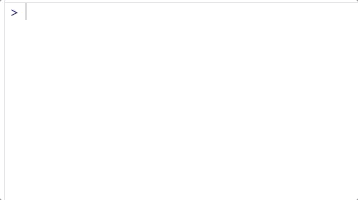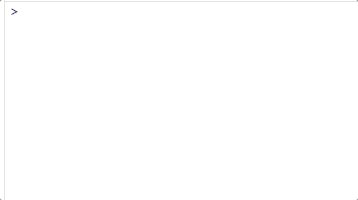minisvg 


minisvg is a package for building SVG documents in R.
Overview
| Need to build | R6 object | alternate initialisation |
|---|---|---|
| SVG elements | stag |
|
| SVG elements | SVGElement$new() |
svg_elem() |
| SVG document | SVGDocument$new() |
svg_doc() |
Quick Examples
| SVG Entity | code | result |
|---|---|---|
| SVG elements | stag$circle(cx=0, cy=0, r=20) |
<circle cx="0" cy="0" r="20" /> |
| SVG elements | SVGElement$new('circle', cx=0, cy=0, r=20) |
<circle cx="0" cy="0" r="20" /> |
| SVG elements | svg_elem('circle', cx=0, cy=0, r=20) |
<circle cx="0" cy="0" r="20" /> |
| SVG document | doc <- SVGDocument$new(); doc$add('circle', cx=0, cy=0, r=20) |
<svg> <circle cx="0" cy="0" r="20" /></svg> |
| SVG document | svg_doc(stag$circle(cx=0, cy=0, r=20)) |
<svg> <circle cx="0" cy="0" r="20" /></svg> |
Vignettes
- Animating SVG with SMIL
- Animating SVG with CSS
- Styling SVG with CSS both as an inline style chunk and as an external CSS document.
- Transformations example
- Some pretty (?) animated geometry
- Creating and Animating the carpet from The Overlook Hotel in The Shining
- Creating and Animating the a seventies wallpaper pattern
Installation
You can install minisvg from GitHub with:
# install.packages("devtools")
devtools::install_github("coolbutuseless/minisvg")stag helper (autocomplete SVG element creation)
The stag helper is similar to shiny::tag and minihtml::htag

svg_prop helper (autocomplete SVG attribute creation)
The svg_prop helper uses autocomplete to help remember the property attributes
of many SVG elements, along with their possible values.

Interface
- Individual elements can be created in a number of ways. E.g. creating a
defsblock- As a stand-alone element
new_elem <- SVGElement$new('defs', style = 'color: black;')new_elem <- svg_elem('defs', style = 'color: black;')new_elem <- stag$defs(style = 'color: black;')
- As a sub-element of an existing document or element - the element is created,
added to the parent document (or element) and returned.
doc <- SVGDocument$new(); new_elem <- doc$add('defs', style = 'color: black;')doc <- SVGDocument$new(); new_elem <- doc$defs(style = 'color: black;')elem <- SVGElement$new('xxx'); new_elem <- elem$add('defs', style = 'color: black;')elem <- SVGElement$new('xxx'); new_elem <- elem$defs(style = 'color: black;')
- As a stand-alone element
$add()creates an element and adds it to the parent (and returns it)new_elem <- doc$add('defs')
$append()appends the given elements as childrennew_elem <- stag$defs(); doc$append(new_elem, ...)
$new(name, ...),$update(...)and$add(name, ...)all accept...where- named arguments are added as attributes of this node
- unnamed argument are added as children of this node
Hello World SVG Example
This first example demonstrates:
- initialising a document of a certain size
- using methods on the
SVGDocumentobject to create a circle - using the
$append()method to add the border rectangle - creating the border rectangle using the
stag$recthelper - using the
svg_prophelper (and autocomplete) to assist in remembering what the stroke width parameter is called - adding text
- adding a rotation transformation to the text
#~~~~~~~~~~~~~~~~~~~~~~~~~~~~~~~~~~~~~~~~~~~~~~~~~~~~~~~~~~~~~~~~~~~~~~~~~~~~~
# Create a document, add a border and a circle
#~~~~~~~~~~~~~~~~~~~~~~~~~~~~~~~~~~~~~~~~~~~~~~~~~~~~~~~~~~~~~~~~~~~~~~~~~~~~~
doc <- SVGDocument$new(width = 400, height = 400)
doc$circle(cx=200, cy=200, r=100, fill = 'yellow')
doc$append(
stag$rect(
x = 0, y = 0, width = 400, height = 400, fill = 'none',
stroke = 'black', svg_prop$`stroke-width`$set(12)
)
)
#~~~~~~~~~~~~~~~~~~~~~~~~~~~~~~~~~~~~~~~~~~~~~~~~~~~~~~~~~~~~~~~~~~~~~~~~~~~~~
# Add some text to the document
#~~~~~~~~~~~~~~~~~~~~~~~~~~~~~~~~~~~~~~~~~~~~~~~~~~~~~~~~~~~~~~~~~~~~~~~~~~~~~
mytext <- doc$text("Hello world", x= 160, y = 210, size = 30)
#~~~~~~~~~~~~~~~~~~~~~~~~~~~~~~~~~~~~~~~~~~~~~~~~~~~~~~~~~~~~~~~~~~~~~~~~~~~~~
# Manipulate the text object to add some animation to it
#~~~~~~~~~~~~~~~~~~~~~~~~~~~~~~~~~~~~~~~~~~~~~~~~~~~~~~~~~~~~~~~~~~~~~~~~~~~~~
mytext$animateTransform(
attributeName = 'transform',
type = 'rotate',
from = "0 200 200",
to = "360 200 200",
dur = 5,
repeatCount = 'indefinite'
)<?xml version="1.0" encoding="UTF-8"?>
<svg width="400" height="400" viewBox="0 0 400 400" xmlns="http://www.w3.org/2000/svg" xmlns:xlink="http://www.w3.org/1999/xlink">
<circle fill="yellow" cx="200" cy="200" r="100" />
<rect fill="none" stroke="black" stroke-width="12" x="0" y="0" width="400" height="400" />
<text size="30" x="160" y="210">
Hello world
<animateTransform attributeName="transform" from="0 200 200" to="360 200 200" type="rotate" dur="5" repeatCount="indefinite" />
</text>
</svg>Parsing SVG text into a minisvg document
minisvg uses xml2 to parse SVGL text (or file) into a minisvg document.
my_svg <- "<svg><circle cx='10' cy='10' r='5'/></svg>"
doc <- minisvg::parse_svg_doc(my_svg)
doc$update(fill = "none")$
add(name = 'rect')
print(doc)<?xml version="1.0" encoding="UTF-8"?>
<svg width="400" height="400" viewBox="0 0 400 400" xmlns="http://www.w3.org/2000/svg" xmlns:xlink="http://www.w3.org/1999/xlink" fill="none">
<circle cx="10" cy="10" r="5" />
<rect />
</svg>70s wallpaper is my jam!
This is a reproduction of a 70s wallpaper pattern.
This example demonstrates:
- Using
svg_doc()as an alternative toSVGDocument$new() - Creating a
<defs><pattern>object and applying it to a rectangle
doc <- svg_doc(width = 800, height = 800)
doc$rect(x=0, y=0, width="100%", height="100%", fill='#9B8A54')
pat <- stag$defs()$pattern(id = 'motif', width=400, height=400, patternUnits = 'userSpaceOnUse')
patg <- pat$g()
patg$circle(cx= 0, cy= 0, r=138, fill= 'white')
patg$circle(cx= 0, cy=400, r=138, fill= 'white')
patg$circle(cx=400, cy= 0, r=138, fill= 'white')
patg$circle(cx=400, cy=400, r=138, fill= 'white')
patg$circle(cx=200, cy=200, r=138, fill= 'white')
patg$circle(cx= 0, cy= 0, r=90, fill= 'none', stroke = '#4a3322', stroke_width=35)
patg$circle(cx= 0, cy=400, r=90, fill= 'none', stroke = '#4a3322', stroke_width=35)
patg$circle(cx=400, cy= 0, r=90, fill= 'none', stroke = '#4a3322', stroke_width=35)
patg$circle(cx=400, cy=400, r=90, fill= 'none', stroke = '#4a3322', stroke_width=35)
patg$circle(cx=200, cy=200, r=90, fill= 'none', stroke = '#4a3322', stroke_width=35)
patg$circle(cx=200, cy= 0, r=90, fill= 'none', stroke = '#4a3322', stroke_width=10)
patg$circle(cx= 0, cy=200, r=90, fill= 'none', stroke = '#4a3322', stroke_width=10)
patg$circle(cx=400, cy=200, r=90, fill= 'none', stroke = '#4a3322', stroke_width=10)
patg$circle(cx=200, cy=400, r=90, fill= 'none', stroke = '#4a3322', stroke_width=10)
doc$append(pat)
doc$rect(x=0, y=0, width="100%", height="100%", fill=pat) <?xml version="1.0" encoding="UTF-8"?>
<svg width="800" height="800" viewBox="0 0 800 800" xmlns="http://www.w3.org/2000/svg" xmlns:xlink="http://www.w3.org/1999/xlink">
<rect fill="#9B8A54" x="0" y="0" width="100%" height="100%" />
<pattern id="motif" width="400" height="400" patternUnits="userSpaceOnUse">
<g>
<circle fill="white" cx="0" cy="0" r="138" />
<circle fill="white" cx="0" cy="400" r="138" />
<circle fill="white" cx="400" cy="0" r="138" />
<circle fill="white" cx="400" cy="400" r="138" />
<circle fill="white" cx="200" cy="200" r="138" />
<circle fill="none" stroke="#4a3322" stroke-width="35" cx="0" cy="0" r="90" />
<circle fill="none" stroke="#4a3322" stroke-width="35" cx="0" cy="400" r="90" />
<circle fill="none" stroke="#4a3322" stroke-width="35" cx="400" cy="0" r="90" />
<circle fill="none" stroke="#4a3322" stroke-width="35" cx="400" cy="400" r="90" />
<circle fill="none" stroke="#4a3322" stroke-width="35" cx="200" cy="200" r="90" />
<circle fill="none" stroke="#4a3322" stroke-width="10" cx="200" cy="0" r="90" />
<circle fill="none" stroke="#4a3322" stroke-width="10" cx="0" cy="200" r="90" />
<circle fill="none" stroke="#4a3322" stroke-width="10" cx="400" cy="200" r="90" />
<circle fill="none" stroke="#4a3322" stroke-width="10" cx="200" cy="400" r="90" />
</g>
</pattern>
<rect fill="url('#motif')" x="0" y="0" width="100%" height="100%" />
</svg>References
- The
minisvgR6 interface is inspired by some of the javascript SVG builders - Mozilla Developer Network SVG docs

